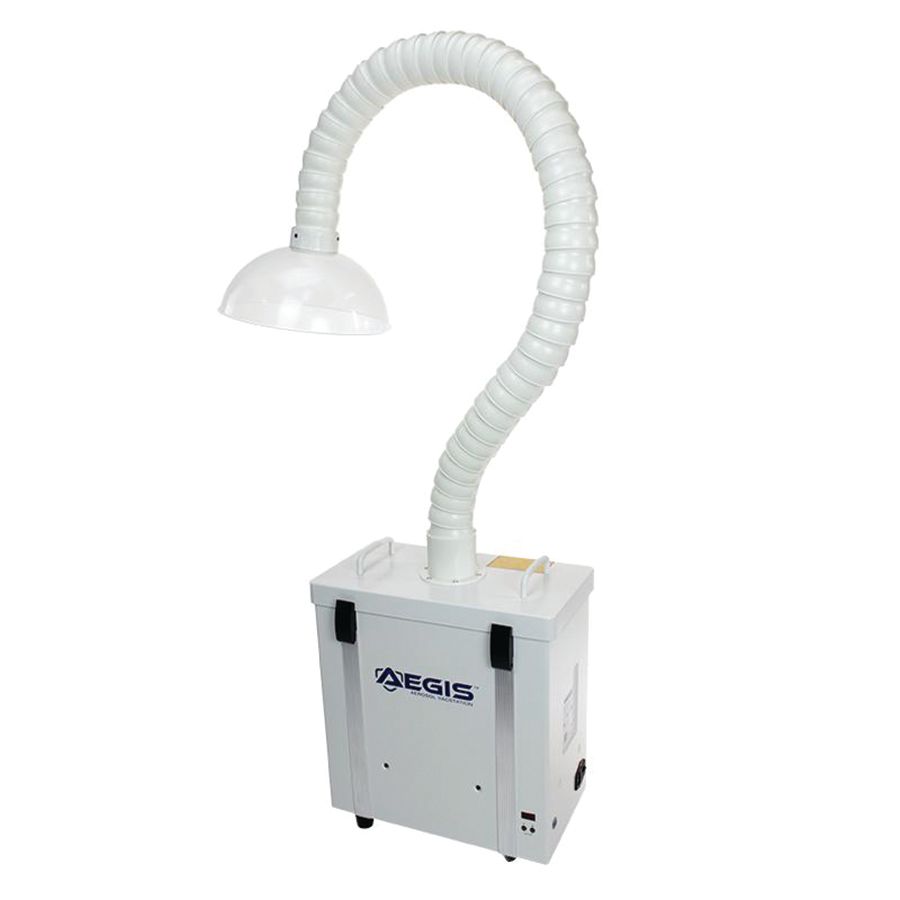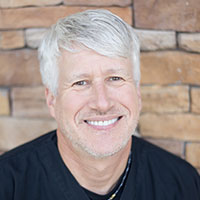Getting the bugs out
SARS-CoV-2 put the spotlight on aerosol-producing procedures and aerosolized particles in dentistry. The VacStation from Aegis could be a powerful ally in the fight against airborne pathogens.

Dr. John Flucke

Punctuated equilibrium—I’ve mentioned it here before, but let’s return to it for a bit in this month’s column.
The idea behind the theory of punctuated equilibrium is that evolution doesn’t occur as just a series of gradual, constant little changes. Instead, the theory states, things go along for a good course of time with hardly any change, and then suddenly some outside factor sets off a flurry of changes. Suddenly a species needs to adapt to survive and…bang, the changes begin. Obviously, these changes occur to make the species more viable and protect it from the dangers of whatever just happened in the environment.
One of the great things about the profession of dentistry is its adaptability. In the past several months, we have seen a sudden change to our environment, both inside our practices and outside. These environmental changes have forced us to make alterations in our personal and professional lives that would have seemed crazy to many of us in the summer of 2019.
However, time and the effects of evolution often provide fuel for the engine of change, and since March 2020, that engine has been pretty much running on overdrive.
I’m grateful for the efforts that dentistry made in infection control in the past. Because of them, our profession was not caught flat-footed by the scourge of severe acute respiratory syndrome coronavirus 2 (SARS-CoV-2). It seems to me that we just had to tweak our infection control protocols rather than make wholesale changes in that aspect of our practices.
Another positive outcome of our stringent personal infection control protocols is that, because we as a profession did such a great job, it allowed us to focus more on the big picture of prevention.
Since reopening my practice on May 18 of this year, I’ve made one statement to patients, friends, and staff, and now I’ll make it here in print: I feel much safer from SARS-CoV-2 in my office than I do at the grocery store or Home Depot. I won’t mention restaurants because I have not eaten inside one since March.
Being on the Front Lines
Statistically, dentistry has to be the highest-risk profession for exposure to SARS-CoV-2. Doctors and team members work well within the bubble of every patient we see. Practically every procedure we perform carries the risk of generating aerosols. In spite of these facts, there is no record of any patient contracting coronavirus disease 2019 in a dental office, and that includes offices in China when the disease had not yet been named.
I think that fact alone speaks volumes about how safe our profession is during this pandemic. We have done an amazing job of keeping things safe from the personal protective equipment (PPE) level; however, I think we owe it to our patients and our teams to continue to work toward not just PPE safety but also environmental safety of the office and/or clinic in general.
By “environmental,” I’m not talking about the carbon footprint. I’m talking about preventing, as much as possible, airborne viruses within the practice’s walls.
Cleansing the Air
We all know that the infection pathway of SARS-CoV-2 is through mucous membranes. Inhaling the virus into the lungs seems to be the easiest way for the virus to get into the body, but it can also enter through the mucous membranes of the nose and eyes. The Centers for Disease Control and Prevention advises those of us in dentistry to protect our mouths, noses, and eyes from viral particles.
The aerosols created during dental procedures get virus particles airborne. There is a great deal of debate about how long they remain in the air. It is generally agreed that fomites, being heavier, settle pretty quickly, but how long smaller particles remain suspended is not known for sure. Thus, many solutions to removing these airborne particles have been proposed, such as UV light or new heating, ventilating, and air-conditioning (HVAC) units with strong filters. However, perhaps one of the simplest solutions is to remove these particles as they leave the patient.
For the past few months, I’ve been working with a device from Aegis called the VacStation. This portable, standalone unit contains a very strong brushless vacuum motor. The device has a strong, large-diameter corrugated plastic hose that can be positioned wherever necessary to provide the best angle for removal of air as it exits the oral cavity. It is flexible and can be positioned anywhere the operator wants. Once positioned, the hose remains in place.
A funnel-type adapter attached to the end of the hose/tubing is shaped like a large dome and made of clear acrylic. This is placed in close proximity to the oral cavity and extends that zone of negative pressure around the face, which helps pull anything leaving the mouth into the filtration system.
The system is powerful, with the brushless electric motor pulling 200 m3 of air per hour through the system. The motor is incredibly quiet. One of my concerns before I even began my clinical evaluation was that the unit would roar like a high-powered vacuum cleaner as I tried to communicate with patients in the operatory. I was immediately surprised when we turned the system on and I heard more of a low background hum, much quieter than anticipated.
A rheostat allows the user to dial down the motor as needed. Of course, a filtration system does no good unless it filters; otherwise, it just moves air around. The VacStation is not only a filtration system, it is a darn good one. This HEPA filtration system works incredibly well at catching small particles such as bacteria and viruses. The device filters anything of at least 0.3 µm with 99.7% efficiency, pulling that 200 m3 of air per hour through 4 types of filtration medium.
First, high-fiber cotton filtration helps stop some of the particles and dries the air as it moves through the system. Next, a fiberglass filter catches dust, fomites, and saliva at an efficiency of 99%. The third layer, activated carbon with KMnO4 and a ceramsite filter, provides adsorption and more filtration.
The fourth type of filter truly amazes me because it is not a filtration medium at all. The fourth filtered area uses high-intensity LED. These 280 nm LED lights use an intensity of 1210 µW/cm2, a wavelength and intensity proved to kill SARS-CoV-2. This wavelength is not visible to the human eye, so even in the dark it is impossible to see the LEDs working, but they are there, killing any viruses that manage to make it through the 3 previous layers. The filters are replaceable and can be purchased through Aegis.
The unit can be easily moved around the office to wherever it is needed most.
Wrapping Up
Virus transmission in nonclinical areas can be prevented through social distancing, proper mask use (especially N95 or KN95 masks), and frequent handwashing, as well as not touching the face.
When it comes to aerosol-producing procedures, it seems wise to remove pathogens as soon as they leave the body. To accomplish that task, the practice needs a reliable auxiliary vacuum unit with a very high and efficient filtration rate. The Aegis VacStation fits those requirements nicely. By the time this column is in print, an evaluation from a well-known clinical testing facility should show that this unit demonstrates clinical superiority over its competitors. For dentists in search of a solution to the problem of airborne pathogens in the clinical environment, this small, quiet, unobtrusive unit should be on the shortlist.
